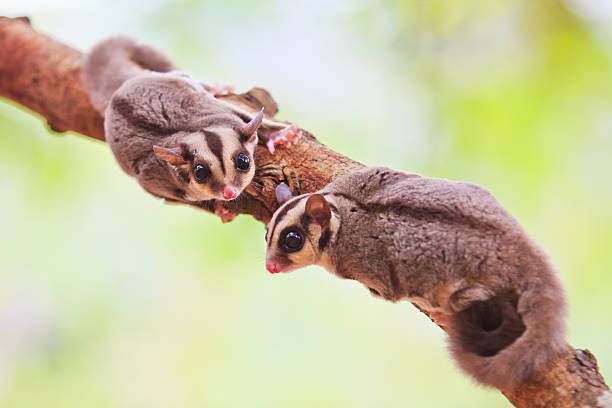Sugar Glider: A Complete Guide to Nature’s Nocturnal Acrobat
Graceful, nocturnal, and endlessly curious, the sugar glider is a marvel of the treetops. Native to the forests of Australia and its surrounding regions, this small marsupial captivates with its ability to glide silently through the air and its strong social bonds. Whether spotted in the wild or kept as an exotic companion, the sugar glider’s charm lies in its unique blend of agility, intelligence, and endearing behavior.
Table of Contents
Scientific Classification
- Common Name: Sugar Glider
- Scientific Name: Petaurus breviceps
- Genus: Petaurus
- Family: Petauridae
- Order: Diprotodontia
Related Species
- Squirrel glider (Petaurus norfolcensis)
- Feathertail glider (Acrobates pygmaeus)
- Greater glider (Petauroides volans)
Description / Physical Description
The sugar glider is a small, agile marsupial, often likened to a flying squirrel due to its gliding ability, though the resemblance is purely superficial. Adults typically measure between 24–30 cm (9.5–12 in) from nose to tail tip, with a body length of 12–13 cm and a tail about the same length.
Weighing approximately 100–160 grams, the sugar glider has a soft, silvery-gray coat, a dark dorsal stripe, and a creamy underbelly. Large, forward-facing eyes enhance its night vision, essential for its nocturnal lifestyle. The most distinctive feature is the patagium—a thin membrane stretching from wrist to ankle, enabling gliding across forest canopies.

Range & Distribution
Where Does the Sugar Glider Live?
Sugar gliders inhabit several regions of Oceania and Southeast Asia. Their native range includes:
- Eastern and Northern Australia
- Papua New Guinea
- Indonesia (notably Western New Guinea)
- Tasmania (rare instances)
In the wild, they thrive in warm, forested environments, making their homes in the tree canopies where they live, feed, and breed.
Habitat
Sugar Glider Habitat in the Wild
Sugar gliders prefer eucalyptus forests, tropical rainforests, and acacia-dominated woodlands. Their arboreal lifestyle keeps them nestled in tree hollows, often lined with leaves for comfort and insulation.
A colony of sugar gliders may occupy a single nesting site, using scent glands to mark territory. Their environment must offer ample vertical space, dense foliage, and nectar-producing trees to support both foraging and gliding.

Diet
Their omnivorous diet varies by season and availability:
- Nectar and pollen from eucalyptus and acacia
- Tree sap and gum
- Insects such as moths, beetles, and crickets
- Fruits like grapes, apples, and melons
In captivity, a balanced sugar glider diet includes:
- Commercial sugar glider pellets
- Calcium supplements
- Small portions of fresh fruits and insects
A poor diet, particularly one deficient in calcium, may lead to metabolic bone disease.

Behaviour / Lifestyle
Sugar gliders are highly social, forming colonies of up to seven individuals. They exhibit strong territorial behavior, reinforced through vocalizations and scent-marking. Common sugar glider vocalizations include:
- Barking (alarm or call to others)
- Crabbing (a defensive sound)
- Chirping and purring (contentment or bonding)
They are primarily nocturnal and arboreal, relying on gliding to navigate trees efficiently. Sugar gliders also show a remarkable ability to bond with humans, especially when raised in captivity with regular handling.
Lifespan
The sugar glider age span varies based on environment:
- In the wild: 4–6 years (due to predation and natural hazards)
- In captivity: 10–15 years (with proper care and veterinary support)
Good sugar glider care, including nutrition, social interaction, and environmental enrichment, is essential for longevity.
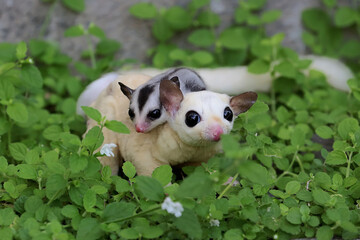
Adaptations
Adaptations of the sugar glider reflect their arboreal and nocturnal lifestyle:
- Patagium: Allows gliding up to 50 meters between trees
- Prehensile tail: Used for balance and grasping branches
- Large eyes: Enhanced night vision
- Scent glands: For communication and territoriality
- Sharp claws: For climbing and gripping bark
These traits allow them to exploit food sources in high canopies and escape ground-dwelling predators.
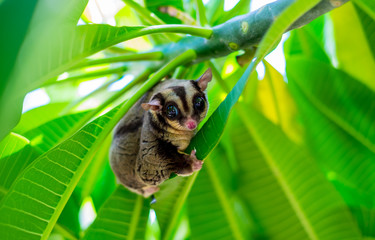
Mating & Reproduction / Reproduction & Lifecycle
Mating typically occurs in warmer months, though in captivity, breeding may be year-round.
- Gestation lasts around 15–17 days
- The newborn crawls into the pregnant sugar glider pouch
- It continues to develop inside the pouch for 60–70 days
- After emerging, the joey remains in the nest for several more weeks until weaning
Litters usually consist of 1–2 offspring. Sexual maturity occurs at around 8–14 months.
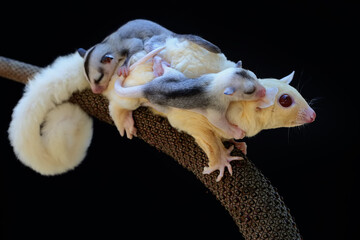
Predators
In the wild, sugar gliders face various natural threats:
- Owls
- Snakes
- Goannas (monitor lizards)
- Feral cats
- Foxes
Their gliding ability and nocturnal vigilance help evade many of these predators, though habitat loss has exposed them to increased risks.
Conservation Status
The sugar glider is currently listed as Least Concern by the IUCN. However, localized populations may be threatened by:
- Deforestation
- Habitat fragmentation
- Pet trade exploitation
Conservation efforts emphasize sustainable forestry, wildlife corridors, and ethical pet breeding practices.
Interesting Facts
- Sugar gliders can glide over 150 feet in a single leap.
- Their name comes from their love for sweet tree sap and their gliding ability.
- Despite being marsupials, they are often mistaken for rodents.
- They have individual personalities, and some may bond deeply with caregivers.
- In the wild, they communicate constantly with a repertoire of vocalizations.
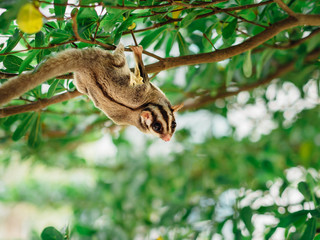
As Pets
The sugar glider is a popular exotic pet, though not suitable for all owners. Key requirements include:
- Cage setup: Tall, multi-level, with branches and nest pouches
- Bonding time: Carried in a bonding pouch daily
- Mental stimulation: Toys, wheels, foraging puzzles
- Veterinary care: Regular checkups with an exotic vet
- Legal compliance: Banned in some states like California and Hawaii
Before adopting, one must understand how to care for a sugar glider properly. Improper handling or diet can lead to stress-related behaviors such as self-mutilation.
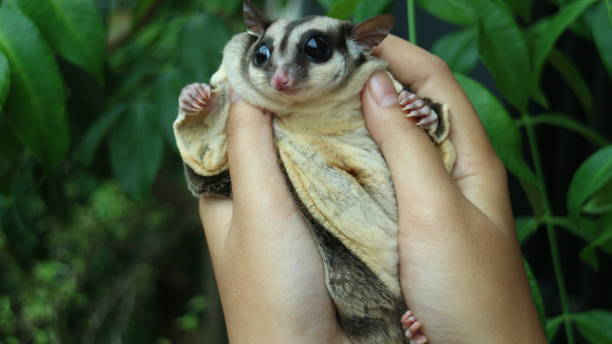
Classification of Species
The sugar glider belongs to a genus known for its gliding marsupials:
- Genus: Petaurus
- Known for their patagium and nocturnal, social behaviors
- Differentiated by size, fur color, range, and vocal traits
Subspecies
Several recognized subspecies of the sugar glider differ slightly in morphology and geographic range:
- Petaurus breviceps breviceps – Eastern Australia
- Petaurus breviceps ariel – Northern Australia
- Petaurus breviceps flavidus – Southern Papua New Guinea
- Petaurus breviceps papuanus – Central Papua
- Petaurus breviceps tafa – Tafa region of Papua
These subspecies exhibit variations in fur color, gliding range, and behavior, adapting to the specific environments they inhabit.


